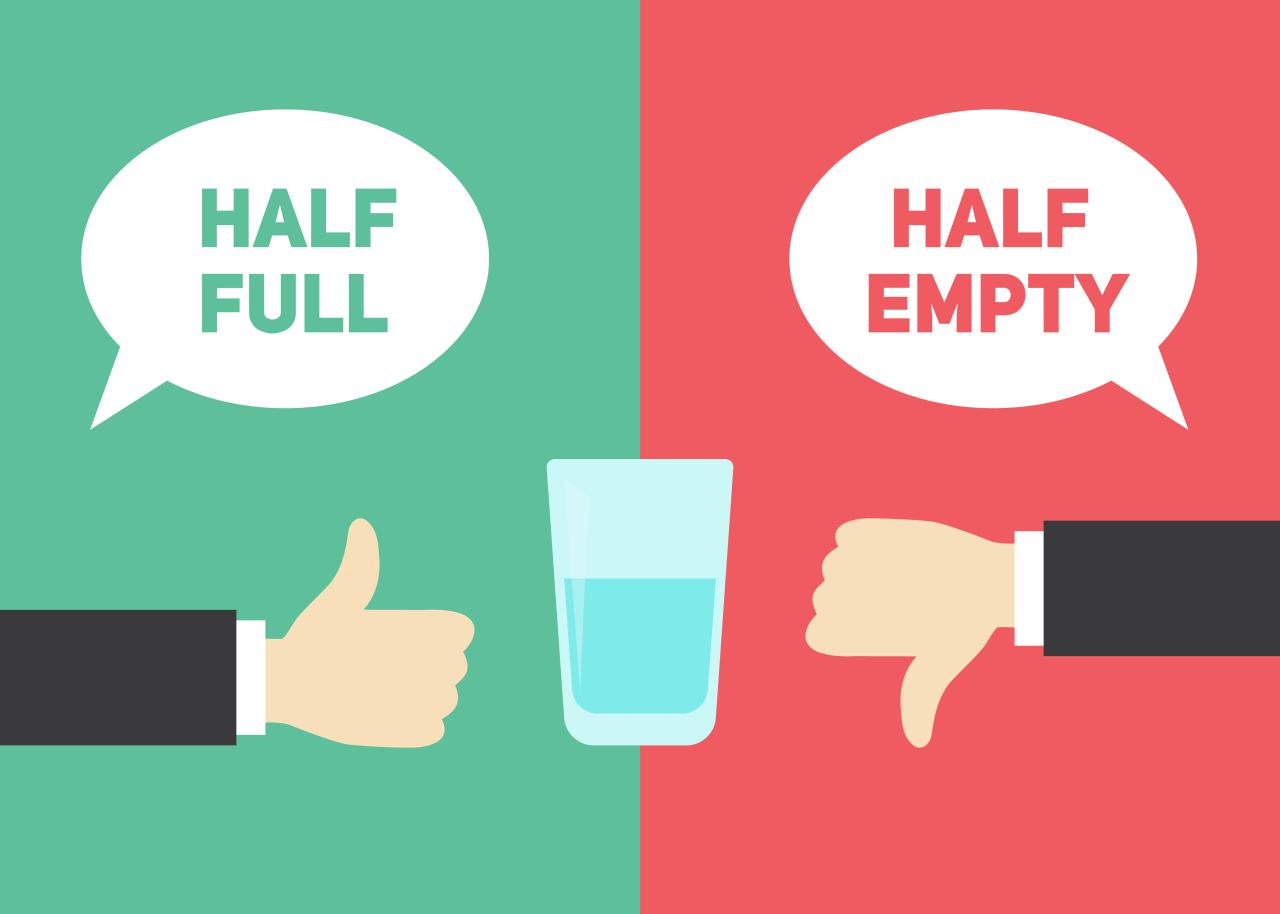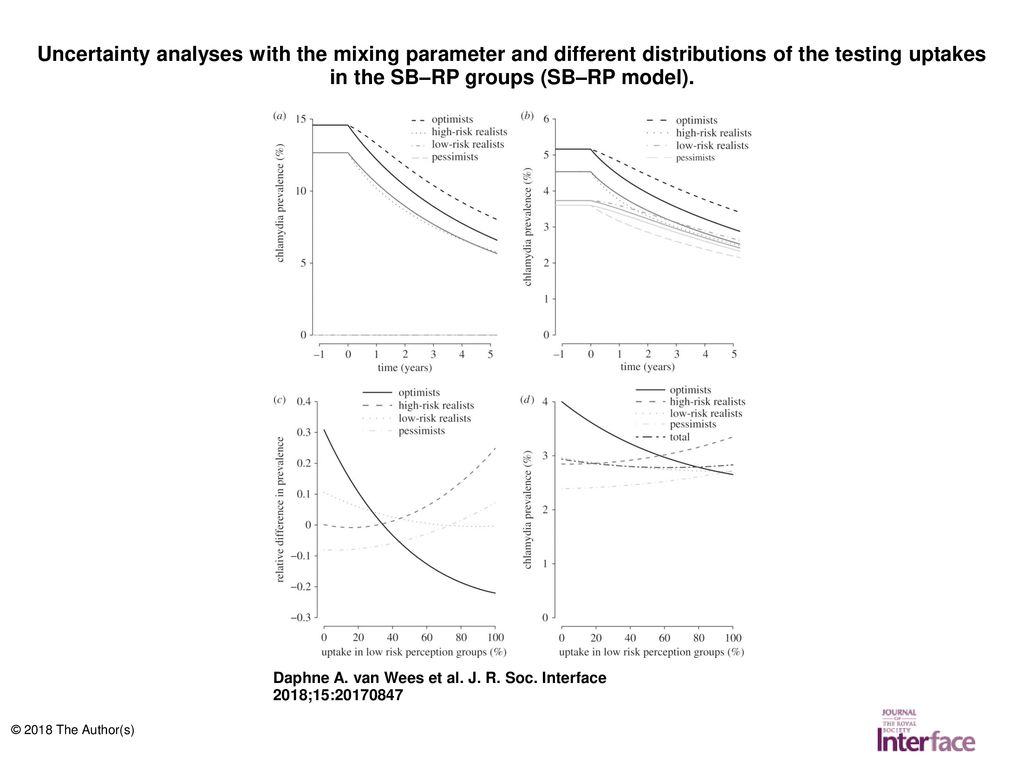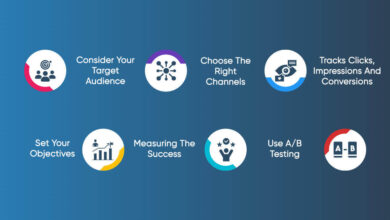
Failure is Feedback A/B Testing Lessons for Optimists
Failure is feedback a b testing lessons for optimists – Failure is feedback: A/B testing lessons for optimists – that’s the core message I want to share today. We often get caught up in the pursuit of perfect A/B tests, viewing anything less than a resounding success as a failure. But what if I told you that even those seemingly “failed” tests are brimming with valuable insights? This isn’t just about optimizing conversion rates; it’s about learning, iterating, and ultimately, building better products.
Get ready to flip your perspective on A/B testing failures and embrace the power of learning from every single result.
This post dives deep into transforming the way you approach A/B testing. We’ll explore how to analyze data meticulously, identify both positive and negative trends, and use that information to refine your designs. We’ll also discuss the importance of a positive mindset, the iterative nature of design, and how to effectively communicate your findings. By the end, you’ll be ready to tackle your A/B tests with confidence, knowing that every result – successful or not – brings you closer to your goals.
Understanding “Failure is Feedback” in A/B Testing
A/B testing, while seemingly straightforward, often presents results that defy initial expectations. The key to unlocking true value from this process isn’t solely focusing on statistically significant “wins,” but rather embracing the insights gleaned from what might appear as failures. The philosophy of “failure is feedback” is paramount in A/B testing, transforming seemingly negative outcomes into powerful learning opportunities that ultimately drive product improvement.The core principle is that every A/B test, regardless of its outcome, provides data.
Even a test where variation B underperforms against the control (A) offers valuable information about user preferences and the effectiveness of your design choices. This data, rather than being dismissed, should be meticulously analyzed to understandwhy* the variation failed. This understanding forms the foundation for future iterations and ultimately leads to more successful tests and better product design.
Examples of Failed A/B Tests Revealing Valuable Insights
Let’s consider a scenario where a company redesigned its website’s checkout process (variation B) aiming to increase conversion rates. The A/B test showed a statistically significant decrease in conversions for variation B compared to the original checkout (A). Initially, this might be seen as a failure. However, a closer look at the data revealed that users were abandoning the process at a specific step in variation B – the new payment options screen.
This unexpected result highlighted a usability issue within the new design, specifically the complexity or unclear presentation of the payment options. This insight, derived from the “failed” test, allowed the company to refine the payment options screen, simplifying the user journey and ultimately leading to a more effective checkout process in subsequent iterations.Another example could involve a change to a website’s call-to-action (CTA) button.
Perhaps a new, more visually striking button (variation B) performed worse than the original (A). This might indicate that the new design, while visually appealing, was less effective at conveying the intended message or action. The analysis could uncover that the new button’s color or wording was confusing or less clear than the original.
Hypothetical Scenario: Failed A/B Test Leading to Significant Product Improvement
Imagine an e-commerce platform testing a new product recommendation system (variation B) against its existing system (A). The new system, designed to personalize recommendations more effectively, unexpectedly resulted in lower click-through rates and sales. Analyzing the data revealed that the new system’s algorithm was overly aggressive, overwhelming users with too many irrelevant suggestions. This “failure” led to a crucial realization: personalization needs to be balanced with relevance and a less intrusive approach.
Subsequent iterations focused on refining the algorithm to prioritize highly relevant products and limit the number of recommendations displayed, resulting in a significant increase in engagement and sales after further A/B testing.
Comparison of Successful and Unsuccessful A/B Test Results
The following table highlights the actionable insights derived from both successful and unsuccessful A/B tests:
| Metric | Successful A/B Test (Variation B outperforms A) | Unsuccessful A/B Test (Variation B underperforms A) | Actionable Insights |
|---|---|---|---|
| Conversion Rate | Increased by 15% | Decreased by 5% | Successful: Replicate successful elements; Unsuccessful: Investigate reasons for decrease (usability issues, messaging, etc.) |
| Click-Through Rate | Increased by 10% | Decreased by 8% | Successful: Optimize CTA design; Unsuccessful: Analyze user behavior on the element; refine design/messaging |
| Average Order Value | Increased by 7% | Decreased by 3% | Successful: Explore pricing strategies; Unsuccessful: Examine pricing or product presentation |
| Bounce Rate | Decreased by 12% | Increased by 6% | Successful: Improved website experience; Unsuccessful: Identify areas of friction; improve UX |
Optimizing for Learning from A/B Test Results
A/B testing isn’t just about finding the “winner”; it’s about systematically improving your understanding of user behavior and optimizing your product or campaign. Even when a variation underperforms, valuable insights can be gleaned, leading to future improvements. Meticulous data analysis, regardless of the outcome, is the key to unlocking this learning potential. The goal is not just to declare a winner but to understand
why* one variation performed better (or worse) than another.
The importance of thorough data analysis in A/B testing cannot be overstated. Every data point, whether statistically significant or not, contributes to a richer understanding of your audience’s preferences and how they interact with your offerings. A superficial analysis risks overlooking critical nuances and potentially valuable opportunities for optimization. A robust analytical approach allows you to identify not only the successful strategies but also the areas needing further refinement.
This iterative process is crucial for continuous improvement.
A Step-by-Step Process for Analyzing A/B Test Data
Analyzing A/B test data involves a structured approach. First, you need to establish clear metrics for success, definedbefore* the test begins. Then, after the test concludes, you examine the results against these pre-defined metrics. This involves comparing key performance indicators (KPIs) between the control and variation groups. Look beyond simple averages; explore the distribution of data to understand variations within each group.
Identify outliers and investigate their potential causes. Finally, correlate the observed changes in KPIs with any specific changes made in the variation.
Identifying Positive and Negative Trends in A/B Test Data
Once the data is collected, visualize it using charts and graphs (e.g., bar charts, line graphs). This allows for easy identification of trends. A positive trend might show a significant increase in conversion rates for a particular variation. A negative trend could reveal a drop in user engagement for a specific feature. For instance, a negative trend could manifest as a decrease in click-through rates or an increase in bounce rates.
Don’t dismiss seemingly small negative trends; they could point to usability issues or aspects of the design that need improvement.
Decision-Making Flowchart After Reviewing A/B Test Results
Imagine a flowchart with a central decision point: “Is the variation statistically significantly better than the control?”. If yes, the path leads to “Implement the winning variation”. If no, the path branches into two possibilities: “Are there actionable insights from the data?” If yes, the path leads to “Iterate on the variation based on findings.” If no, the path leads to “Abandon the variation and explore alternative approaches”.
This flowchart visually represents the iterative nature of A/B testing, emphasizing that even unsuccessful tests provide valuable information.
Comparison of Statistical Methods for A/B Test Interpretation
Several statistical methods exist to analyze A/B test results. Common methods include t-tests and z-tests, which assess the statistical significance of differences between the control and variation groups. Bayesian methods offer a different approach, providing probabilities of one variation being superior to another. The choice of method depends on factors like sample size, data distribution, and the specific research question.
For example, a t-test might be appropriate for comparing the means of two normally distributed groups, while a chi-squared test might be used to analyze categorical data, such as click-through rates. Understanding the strengths and limitations of each method is crucial for drawing accurate conclusions.
Iterative Design and the Role of A/B Testing

Source: windows.net
Iterative design is the cornerstone of successful product development. It’s a cyclical process of building, testing, analyzing, and refining, constantly striving for improvement based on real user feedback. A/B testing is a crucial component of this iterative cycle, providing a data-driven approach to making informed decisions about design choices and feature implementations. It allows us to objectively compare different versions of a product or feature and identify which performs better based on key metrics.A/B testing allows us to systematically test hypotheses about user behavior and preferences.
By isolating specific variables, we can pinpoint which design elements are most impactful. This iterative process, fueled by A/B testing data, leads to a more refined, user-centered product that achieves its business goals more effectively.
Common Pitfalls in Interpreting A/B Test Results
Misinterpreting A/B test results is a common problem, often leading to flawed decisions. One frequent error is prematurely ending a test before sufficient data has been collected. Statistical significance needs to be reached to ensure the observed differences aren’t simply due to random chance. Another pitfall is focusing solely on one metric, ignoring others that might offer a more nuanced understanding of the overall impact.
For example, a higher click-through rate might be accompanied by a lower conversion rate, indicating a potential problem with the subsequent steps in the user journey. Finally, failing to account for external factors that could influence the results, such as seasonal trends or marketing campaigns, can lead to inaccurate conclusions. Rigorous statistical analysis and careful consideration of contextual factors are crucial for accurate interpretation.
Key Metrics to Track During an A/B Test
Tracking the right metrics is essential for drawing meaningful conclusions from A/B tests. The specific metrics will vary depending on the goals of the test, but some common and crucial ones include:
- Conversion Rate: This measures the percentage of users who complete a desired action (e.g., making a purchase, signing up for a newsletter). It’s a critical metric for most A/B tests because it directly reflects the success of the product or feature.
- Click-Through Rate (CTR): This measures the percentage of users who click on a specific element (e.g., a button, link). It’s useful for evaluating the effectiveness of calls to action and overall engagement.
- Bounce Rate: This measures the percentage of users who leave a website after viewing only one page. A high bounce rate can indicate problems with the page’s design or content.
- Average Session Duration: This measures the average time users spend on a page or website. Longer session durations often correlate with higher engagement and interest.
- Page Views per Visit: This indicates how many pages a user visits during a single session. It helps gauge user navigation and engagement.
It’s important to establish clear goals before starting an A/B test and to select metrics that directly align with those goals.
Refining a Design Element Using A/B Testing: Button Color
Let’s say we want to optimize the color of a “Buy Now” button on an e-commerce website. We hypothesize that a more prominent color, such as red, will lead to a higher conversion rate compared to the current blue button. We would set up an A/B test with two variations: one with the blue button (control group) and one with the red button (variation group).
We would then randomly assign users to either group and track the conversion rate for each. If the A/B test shows statistically significant improvement in conversion rate for the red button, we would implement the change. For example, if the blue button had a 2% conversion rate and the red button had a 3% conversion rate, with statistical significance, we’d conclude the red button is more effective.
However, a lack of statistical significance would indicate that further investigation or testing is needed. This simple example demonstrates how A/B testing can be used to make data-driven design decisions.
The Mindset of an Optimist in A/B Testing

Source: slideplayer.com
A/B testing, while a powerful tool for optimization, can be a rollercoaster of wins and losses. The key to navigating this process effectively and consistently improving your results lies in cultivating a positive and growth-oriented mindset. An optimistic approach transforms setbacks into valuable learning opportunities, fueling continuous improvement and ultimately leading to greater success.A positive and growth-oriented mindset dramatically enhances the effectiveness of A/B testing.
When you approach each test with a belief in your ability to learn and improve, you’re more likely to persevere through challenges and analyze results objectively, extracting maximum value from every experiment. This proactive attitude allows for a more thorough exploration of possibilities and a more flexible approach to adaptation. Instead of viewing negative results as failures, they become data points guiding you towards a more effective solution.
Constructive Framing of Failures in a Team Environment
Open communication and a shared understanding of the iterative nature of A/B testing are crucial. When a test fails to yield the desired results, avoid assigning blame. Instead, focus on collaborative analysis. For example, a team might conduct a post-mortem, dissecting the test’s design, execution, and results. This process should identify areas for improvement, focusing on actionable steps rather than dwelling on shortcomings.
This approach fosters a culture of learning and mutual support, where everyone feels comfortable contributing ideas and taking risks without fear of negative consequences. A specific example might involve a failed A/B test on a new website layout. Instead of criticizing the designer, the team might discuss the potential reasons for low conversion rates – perhaps the new layout was too complex or the call-to-action was unclear.
The discussion would then center on how to improve the design based on user feedback and data analysis, leading to a revised version for future testing.
Maintaining Motivation During Unsuccessful A/B Tests
Sustaining motivation through a series of unsuccessful A/B tests requires a strategic approach. First, remember that every test, regardless of the outcome, provides valuable data. Celebrate small wins and acknowledge progress, even if it’s incremental. Regularly review the overall progress made, highlighting the cumulative learning gained from previous experiments. It’s also vital to set realistic expectations.
Not every test will be a home run, and understanding this upfront helps manage expectations and prevents discouragement. Visualizing the long-term goals and the positive impact of continuous improvement can significantly boost morale. For instance, charting the overall conversion rate over time, even with fluctuations, can clearly demonstrate the positive trajectory of improvement.
Motivational Techniques for Continuous Improvement, Failure is feedback a b testing lessons for optimists
To foster a culture of continuous learning and improvement, several motivational techniques can be employed.
The following strategies are designed to encourage consistent learning and improvement:
- Regular team debriefs: These sessions allow for open discussion of results, regardless of outcome, focusing on learning and improvement.
- Gamification: Introducing friendly competition or reward systems can increase engagement and motivation.
- Knowledge sharing: Encourage team members to share their learnings and insights from past A/B tests.
- Continuous learning initiatives: Provide opportunities for team members to expand their knowledge and skills related to A/B testing and data analysis.
- Celebrating small wins: Acknowledging even minor improvements helps maintain momentum and positive reinforcement.
Visualizing A/B Test Results for Clear Communication
Data visualization is crucial for effectively communicating the results of your A/B tests. Stakeholders, regardless of their technical expertise, need to quickly grasp the impact of your tests. Clear, visually appealing charts and graphs are the key to achieving this, transforming complex data into easily digestible insights.Effective data visualization goes beyond simply presenting numbers; it tells a story.
It highlights key trends, emphasizes significant differences, and facilitates a clear understanding of whether your A/B test yielded a positive, negative, or inconclusive outcome. The right visuals can significantly improve the adoption and implementation of your findings.
Chart Types for A/B Test Results
Choosing the right chart type is vital for clear communication. Bar charts are excellent for comparing the performance of different variations, while line charts are ideal for showing trends over time. Pie charts can be used to show the proportion of conversions, but should be used sparingly as they can become difficult to interpret with many segments.
So, “failure is feedback” – a core principle in A/B testing, right? It’s all about iterating, learning from what doesn’t work, and refining your approach. This mindset is crucial, especially when you’re tackling something as dynamic as YouTube, like the strategies outlined in this excellent guide on getting it on with youtube. Ultimately, embracing those YouTube stumbles as learning opportunities reinforces the power of A/B testing and the “failure is feedback” mantra.
Examples of A/B Test Result Visualizations
Below are examples of how different chart types can illustrate various A/B test outcomes. Remember to always clearly label your axes and provide a concise title explaining the chart’s content.
| Chart Type | Scenario | Description | Visual Representation (Textual Description) |
|---|---|---|---|
| Bar Chart | Positive Result | Variation B significantly outperforms Variation A in conversion rate. | A bar chart showing two bars, one for Variation A and one for Variation B. Variation B’s bar is significantly taller, representing a higher conversion rate (e.g., A: 10%, B: 20%). The x-axis labels the variations, and the y-axis represents the conversion rate. A clear title indicates “A/B Test Results: Conversion Rate”. |
| Line Chart | Negative Result | Variation B consistently underperforms Variation A over a period of time. | A line chart with two lines, one for Variation A and one for Variation B. Variation A’s line remains consistently above Variation B’s line throughout the chart’s duration. The x-axis represents time (e.g., days), and the y-axis represents the conversion rate. A title clearly states “A/B Test Results: Conversion Rate Over Time”. |
| Bar Chart | Inconclusive Result | No statistically significant difference is observed between Variation A and Variation B. | A bar chart with two bars of nearly equal height, representing Variation A and Variation B. Error bars are included, showing the range of possible values, overlapping significantly. The x-axis labels the variations, and the y-axis represents the conversion rate. The title clearly indicates “A/B Test Results: Conversion Rate – Inconclusive”. |
Communicating A/B Test Findings to Stakeholders
Clarity and conciseness are paramount when presenting A/B test results to stakeholders. Avoid technical jargon and focus on the key takeaways. Start with a summary of the test’s objective and then present the results using your carefully crafted visuals. Highlight the significance of the findings and their implications for future strategies. Always be prepared to answer questions and provide further context as needed.
A well-structured presentation, emphasizing visual aids and clear language, ensures your findings are understood and acted upon.
Conclusive Thoughts: Failure Is Feedback A B Testing Lessons For Optimists

Source: five.co
So, the next time your A/B test doesn’t yield the expected results, don’t despair! Remember, failure is merely feedback disguised as a setback. Embrace the learning opportunities, analyze your data rigorously, iterate on your designs, and maintain that optimistic mindset. By shifting your perspective and focusing on the valuable lessons learned from each experiment, you’ll not only improve your A/B testing strategy but also create a more robust and user-centric product.
The journey of A/B testing is a continuous cycle of learning and improvement – let’s embrace the ride!
Detailed FAQs
What if my A/B test shows no statistically significant difference?
This doesn’t necessarily mean failure. It could indicate that your variations weren’t compelling enough, or that the sample size wasn’t large enough to detect a difference. Review your data carefully, consider refining your hypotheses, and run the test again with adjustments.
How many variations should I test at once?
Start with 2-3 variations to avoid overwhelming your users and complicating your analysis. You can always add more variations later based on initial results.
How long should I run an A/B test?
The duration depends on your traffic and the desired statistical significance. Use a sample size calculator to determine the necessary duration for reliable results.
What if my team is discouraged after several unsuccessful tests?
Celebrate the learning from each test! Frame failures as opportunities for growth and highlight the insights gained. Focus on the iterative process and the progress made, not just the immediate results.





